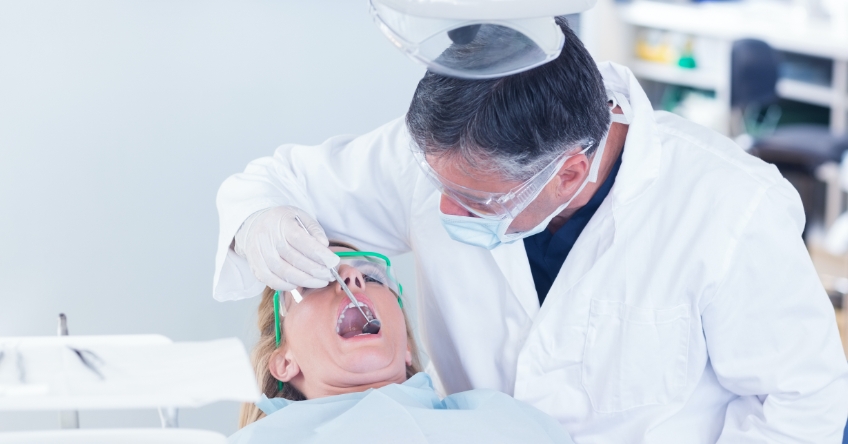
Radiographic Assessment Before Cementation: Detecting the ‘Misfit’ of Indirect Restorations
During my Restorative Design workshop on Spear Campus, I always survey the participants by asking, “Who uses radiographs to check the fit/misfit of the indirect restoration before cementation?” Overwhelmingly, 50-75% of participants use radiographs to conduct this procedure.
I have never used radiographs for this purpose. The only area that may be possible to evaluate by this technique is the interproximal — not the buccal or lingual — aspect of the tooth-restorative interface.
Many variables must be considered when checking the fit/misfit of the indirect restoration before cementation, making radiographic assessment highly unpredictable and, therefore, not recommended.
These variables include:
- The horizontal and vertical angles of the X-ray beam relative to the tooth preparation finish line and the intaglio surface of the restoration at the margin. The X-ray beam would have to be exactly parallel to these surfaces to be accurate.1
- Improper angulation of the censor/film relative to the X-ray beam will distort the radiographic image.
- Radiographic differences in appearance of the enamel and dentin at the preparation finish line.
- Anatomic variation in tooth/root form interproximally.
- Radiographic differences in appearance of restorative materials. The relative opacity of the restorative materials is highly variable between metal, zirconia, lithium disilicate, and other glass ceramic materials and milled composite resins.
- There is no standard of what a “closed” margin looks like radiographically.
- The tooth’s stability is questionable during the try-in procedure and the manipulation that occurs while taking the radiograph.
Radiographic Assessment Before Cementation: A Literature Review
Because such a high percentage of dentists in my courses use radiographic evaluation to check for the misfit of indirect restorations, I was unaware that this was a current clinical standard. I decided to do a literature review using PubMed as my resource.
No literature supported using radiographic assessment for evaluation or marginal integrity.
One systematic review published in 2014 examined the period 1950-20142. This review initially identified 446 potential studies for inclusion, which were reduced to 14 based on the review criteria they had established.
Six of the 14 papers evaluated implant restorations, so only eight related to tooth restorations. Two studies were in vivo, and only one study, published by Assif D. (1985), evaluated the marginal gap of crowns on a tooth. The remaining studies evaluated amalgam, composite, the overhang of luting agents, and caries.
The review authors concluded that there were no clinically relative outcomes related to the use of radiographs to evaluate restorative fit. The studies included in the review were too few and rated as low to moderate quality based on QUADAS criteria.
QUADAS is a tool for assessing the quality of diagnostic accuracy studies included in systematic reviews. It is concerned with the quality of a study’s internal and external validity.
The most recent relevant article I could identify was by Wahle et al. (2018), which evaluated ceramic crown margins with digital radiography. They evaluated lithium disilicate, fluorapatite, and metal-ceramic crown fit on a maxillary premolar.
Two radiographic angles were used to evaluate the marginal gap increment of 0 to 20 µm and increasing by 20 µm to a maximum of 200 µm. Twenty-one dentists evaluated the radiographs to identify “acceptable” and “unacceptable” margins. For this study, a marginal discrepancy greater than 80 µm was considered “unacceptable”.
The correct overall radiographic marginal assessments for all crown materials was 66 percent. Here is a breakdown relative to materials:
- Metal ceramic – 48.8%
- Lithium disilicate – 72.1%
- Fluorapatite – 76.9%
In addition, 78.6% of metal-ceramic crowns were incorrectly scored as “acceptable” (false positives) for open margins. When evaluating the other materials, 66.1% of lithium disilicate and 45.8% of fluorapatite crowns were evaluated incorrectly as “unacceptable” (false negatives) for closed margins. The authors of this study concluded that care is needed in evaluating crown margins with digital radiographs.
Final Thoughts
Radiographic evaluation of indirect restorations is highly variable, and a normal radiographic appearance of a margin does not necessarily mean that the margin of the restoration is sufficient.
If anyone has read a current peer-reviewed study from a quality journal to support using radiographs to evaluate margins, I would love to hear about it.
References
- Wahle, W. M., Masri, R., Driscoll, C., & Romberg, E. (2018). Evaluating ceramic crown margins with digital radiography. The Journal of Prosthetic Dentistry, 119(5), 777-782.
- Sailer, B. F., & Geibel, M. A. (2013). Comparative analysis of intraoral radiographs with variation of tube angulation to detect insufficient crown margins. International Journal of Computerized Dentistry, 16(3), 201-207.
- Liedke, G. S., Spin‐Neto, R., Da Silveira, H. E. D., & Wenzel, A. (2014). Radiographic diagnosis of dental restoration misfit: a systematic review. Journal of Oral Rehabilitation, 41(12), 957-967.
SPEAR campus
Hands-On Learning in Spear Workshops
With enhanced safety and sterilization measures in place, the Spear Campus is now reopened for hands-on clinical CE workshops. As you consider a trip to Scottsdale, please visit our campus page for more details, including information on instructors, CE curricula and dates that will work for your schedule.

By: Robert Winter
Date: November 22, 2021
Featured Digest articles
Insights and advice from Spear Faculty and industry experts


